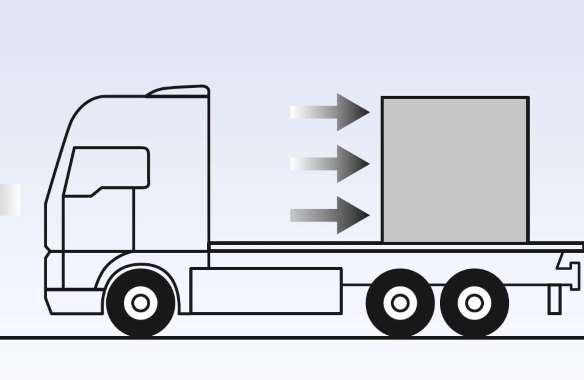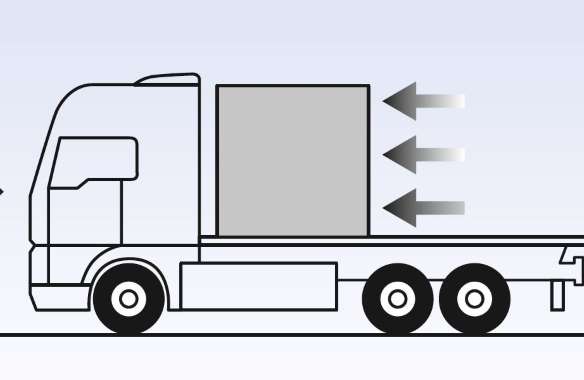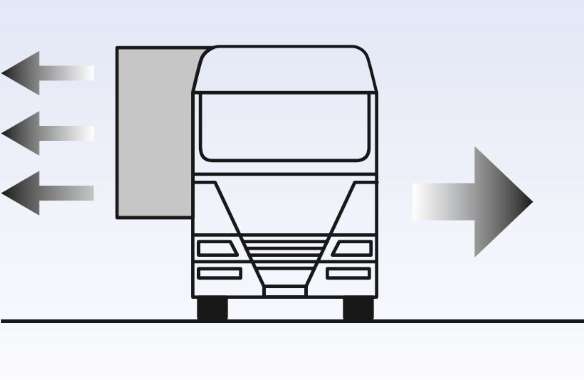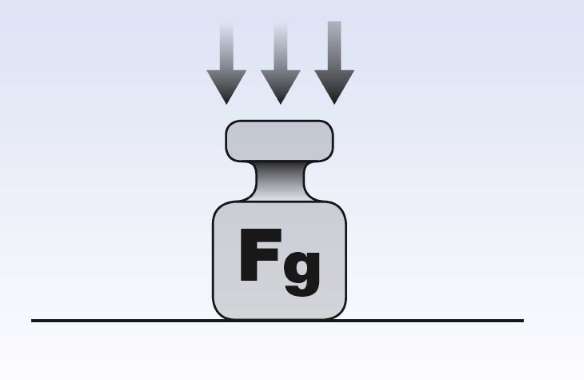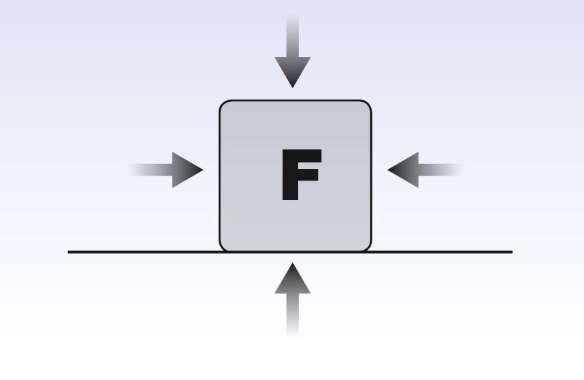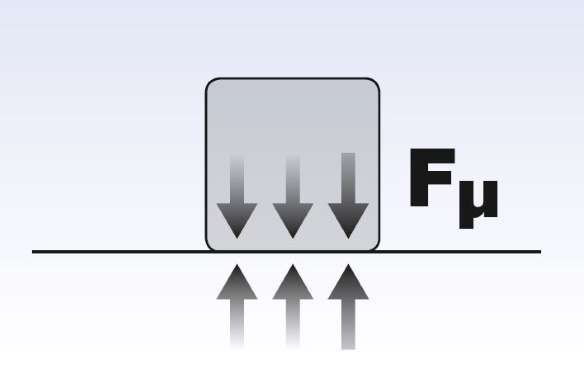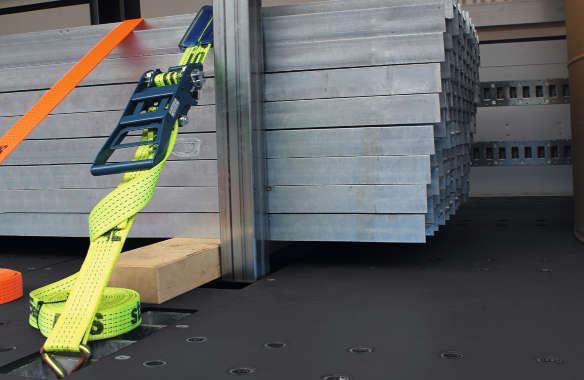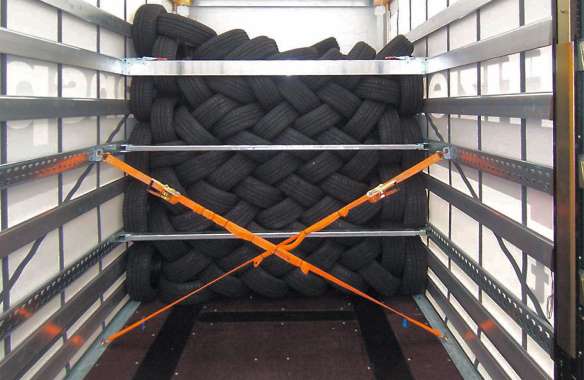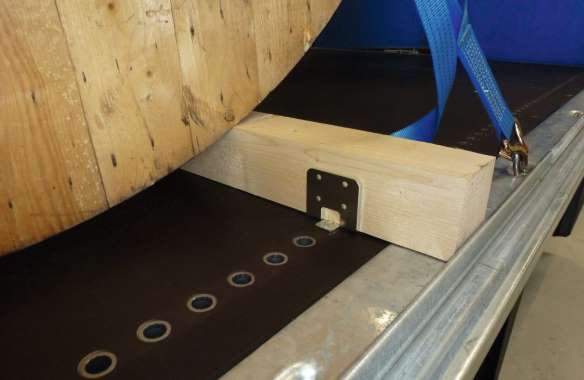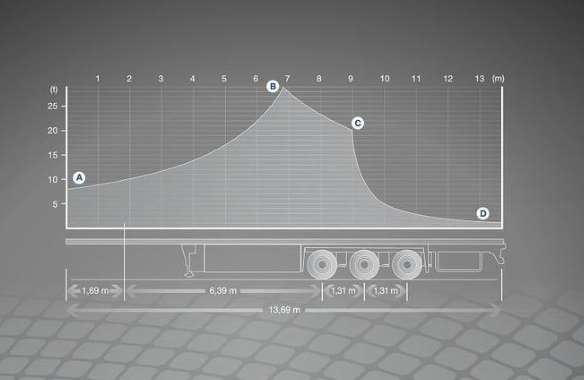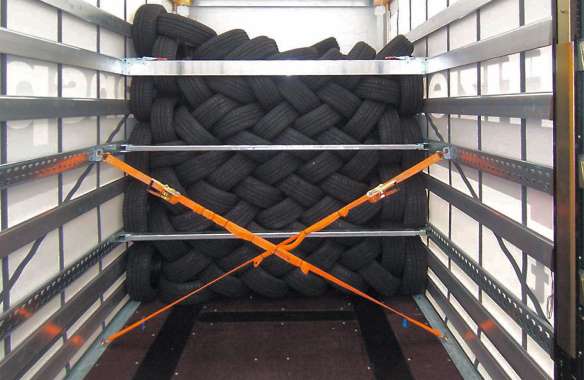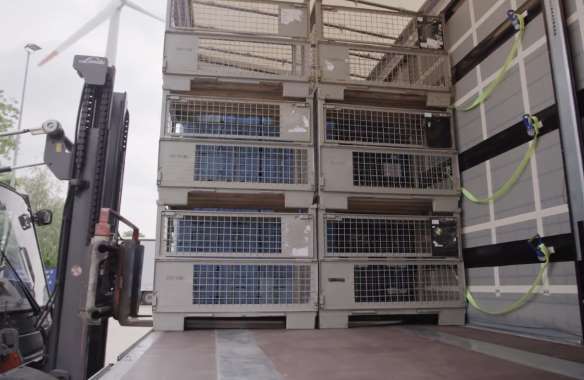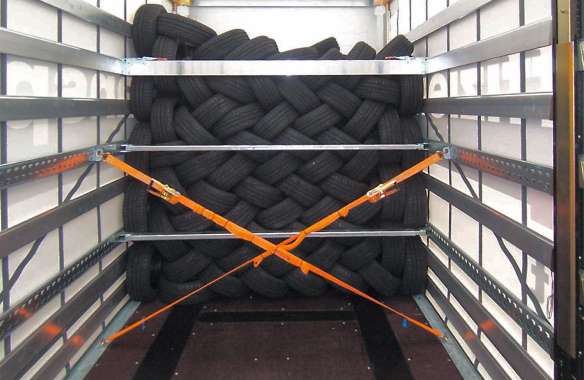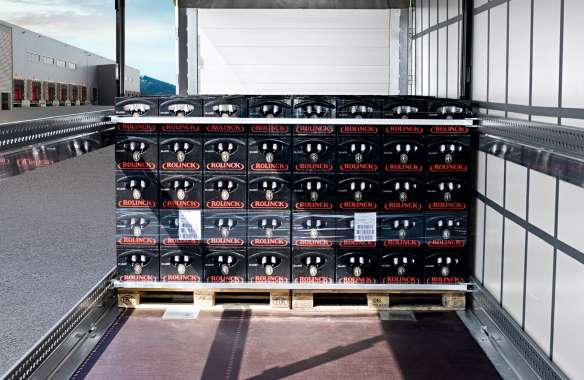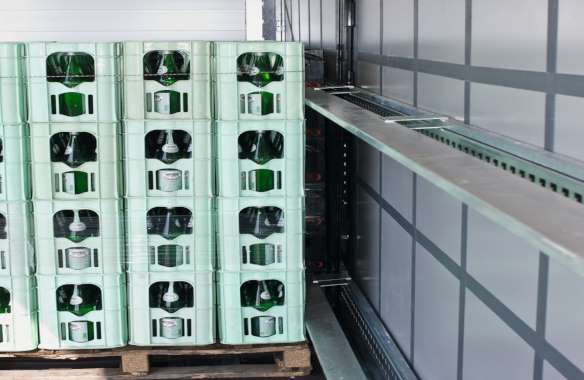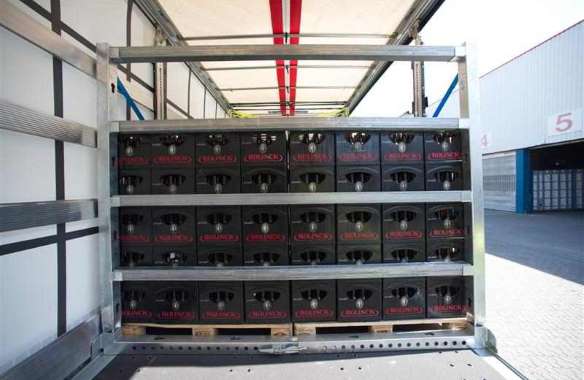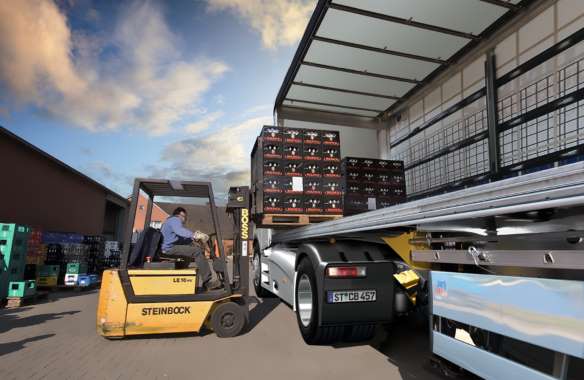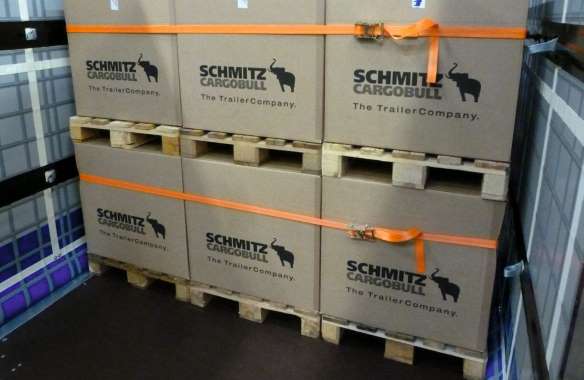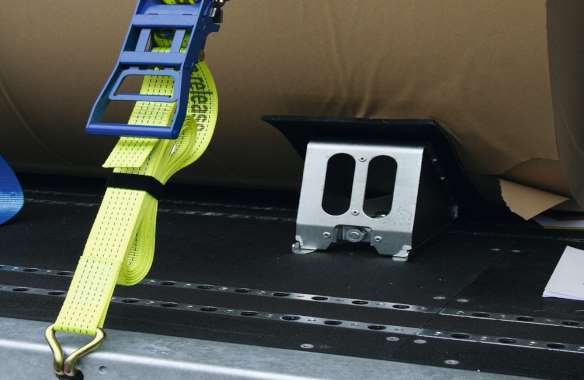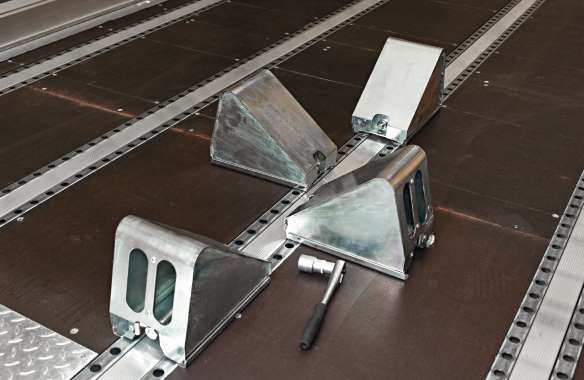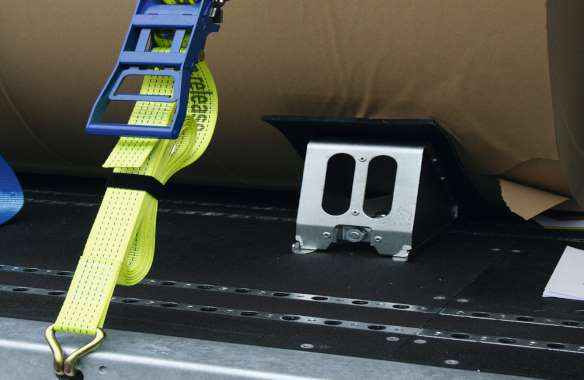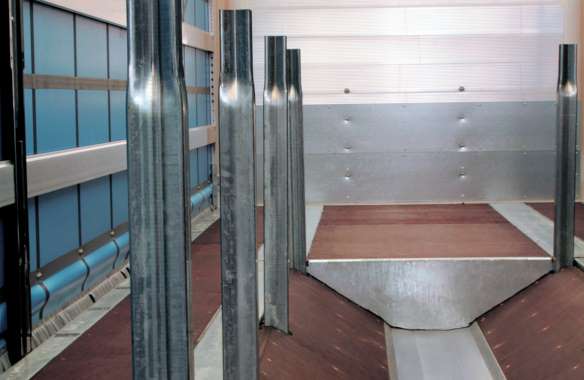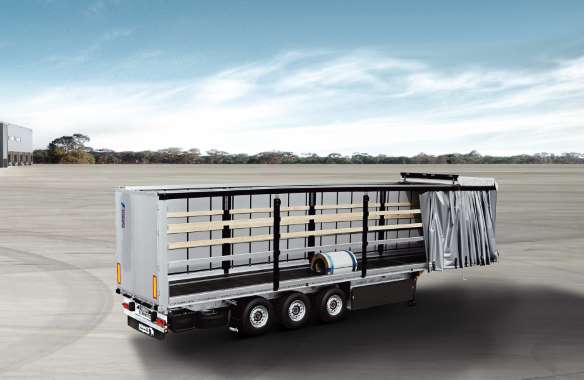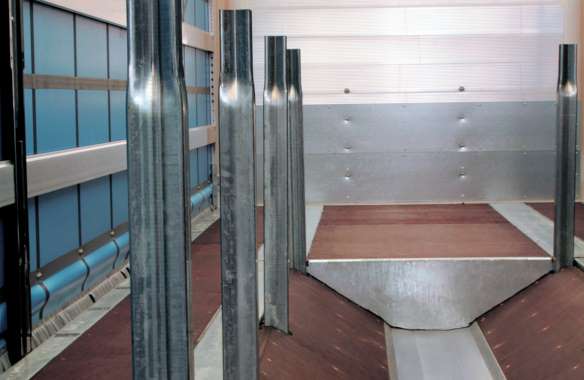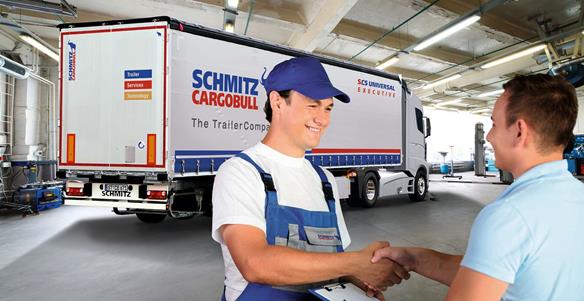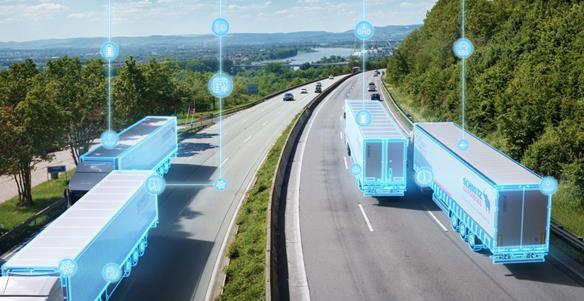Load securing
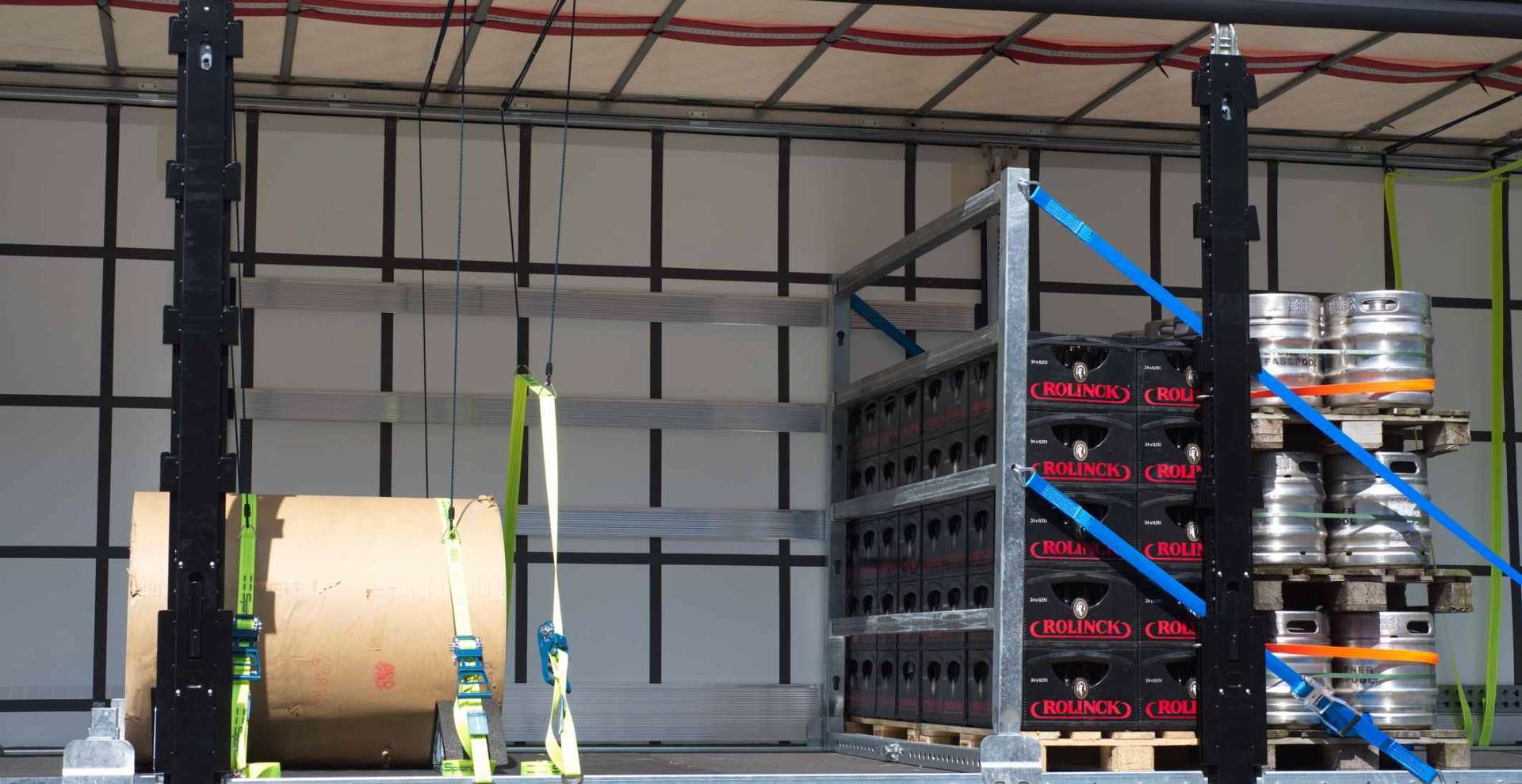
Legal framework
Freight transport load securing is governed by different safety specifications. The requirements apply to the vehicle, the load and anyone else involved in day-to-day transportation work. Technical regulations governing load securing need to be considered as well as statutory regulations.
-
Technical regulationsThe more pertinent the "acknowledged codes of practice" in § 22 German Road Traffic Regulations are required, the clearer it is that the specifications of the various organisations for securing loads are partially overlapped and supplemented. Therefore, it is possible to receive semi-trailers that simultaneously conform to the regulations of the VDI Directive 2700, the Daimler Directive 9.5 and DIN EN 12642 Code XL.Read more
-
Legal frameworkThe German Road Traffic Regulations (§22 and §22 StVO) and the Commercial Code (§412 HGB), as well as the Occupational Safety and Health Act (ArbSchG) and Accident Prevention Regulations (§22 and §37 UVV) of the professional associations assign a particular responsibility to driver / driver of the vehicle / carrier for the correct securing of loads for transportation. The semi-trailer must be also safely constructed and equipped (§§ 22 Para. 1 and 37 Para. 4 UVV), so that the load can be correctly secured.
Sections 30 and 31 of the German Road Traffic Regulations cover the vehicle owner's obligations, while Section 22 refers to the loading process.Read more
Physical forces
Whether it's gravity, centrifugal force or friction - the laws of physics affect how you load your trailer.
Load securing principles
A fundamental distinction is made between two principles of securing loads: containment and restraint.
Load security through restraint relies on intensifying the friction forces between the load and the loading surface. The pressure on the load is increased with the aid of lashing equipment, hence the load is more strongly pressed onto the loading surface, retaining its position.
Restraint as the load securing method: When lashing down a load, the restraint equipment does not directly secure a load, but increases the contact pressure. Friction alone prevents the load from slipping.
Load securing through containment is based on limiting the loading area, meaning that every item of freight rests on another item or against the limits of the cargo area, for instance the front or rear wall, leaving no gap.
In practice, the cargo needs to be positioned tightly against the front wall, rear wall or side walls (impact edge of the pallet), with no gaps between the individual elements.
Gaps between individual load elements cannot be completely prevented, however, they must not be more than a few centimetres, otherwise they do not provide containment The gaps must then be accordingly filled, or the load must be secured using restraints.
Normally, a combination of containment and restraint is the easiest and most effective, as the elements of both methods complement each other.
Each trailer provides different prerequisites to contain loads, even if the load type does not normally permit this, such as pallets with sacks or fragile goods.
Aids include perforated rails in the floor of the vehicle, Joloda rails integrated and lowered into the floor, insertable stanchions, cross-beams etc. However it is also possible to block the load by means of belts or the trailer body
Load distribution
All load securing measures are determined by the different types of load. This includes observing the German Road Traffic Regulations (StVO). Load distribution must not impair either traffic safety or operational safety.
-
Loading is only secure when the load conforms to the load distribution planRead more
-
Special loads: there are precisely defined loading positions with the corresponding recesses and supports for high point loading, such as steel coils, among othersRead more
-
If the load is placed too far to the rear on the trailer, the result can be insufficient semi-trailer pressure. This affects driving safety because the tyres have less grip if there is insufficient pressure on the drive axle. If the load is placed too far forward, the drive axle can be overloaded, even if the permitted total weight is not exceeded.Read more
Practical examples
A wide variety of goods are transported every day. Hence the most diverse requirements need to be met for securing loads.
-
Automotive
-
Beverage transport
-
Packaged goods
-
Paper transport
-
Coil transport
Rollcages enable different goods to be secured quickly, because the uniform sizes enable perfect form-fitting loads. In addition to the structural stability of the body, these include pallet stops for side fixing, transverse beams and telescopic rods to restrain through gaps in the load and within a height of 3m, a lifting roof to enable quick loading of 3 boxes placed on top of one another.
For certified tyre transport, the equipment must be complemented by 6 rows of support laths and 2 rows of steel slats on each side, in accordance with the Code XL certificate. A tensioning strap cross at each stanchion field holds the loose tyres longitudinally. Additional retention is provided by steel laths with a narrow perforated grid. Here, engaged transverse beams establish restrain a partial load.
Our services
Media
-
Raise the curtain for correct load securing - Load securing brochure

